The Service Upgrade, cont
Do you really need to upgrade your electric service? Part 2
In Part 1 of my saga with the electric service upgrade, I shared my story about the challenges of upgrading my 1960 California ranch house. In the US about 1/3 of homes, maybe more (a VP at PG&E mentioned in a panel talk on 4/23/25 that around half of homes in their 5M home service territory have 100 amp service mains) have the same challenge - a 100-amp service panel that some people say can’t support home electrifications or upgrades. Maybe you are one of these people!
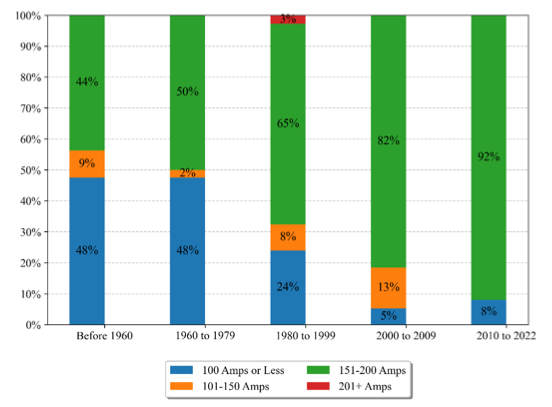
So what to do? While many electricians say just upgrade your electric service, this can get costly and time consuming, as I found out!
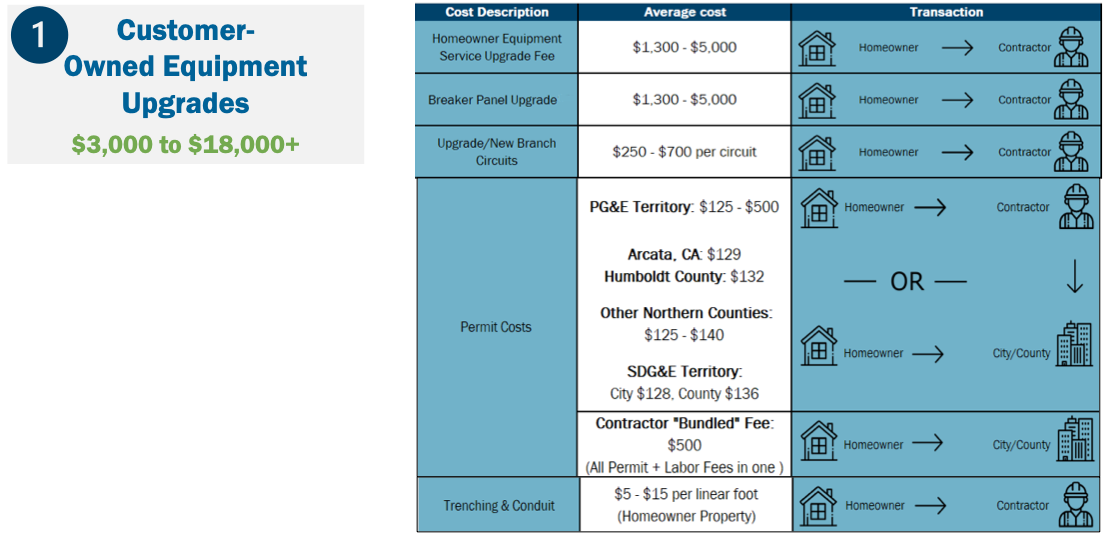
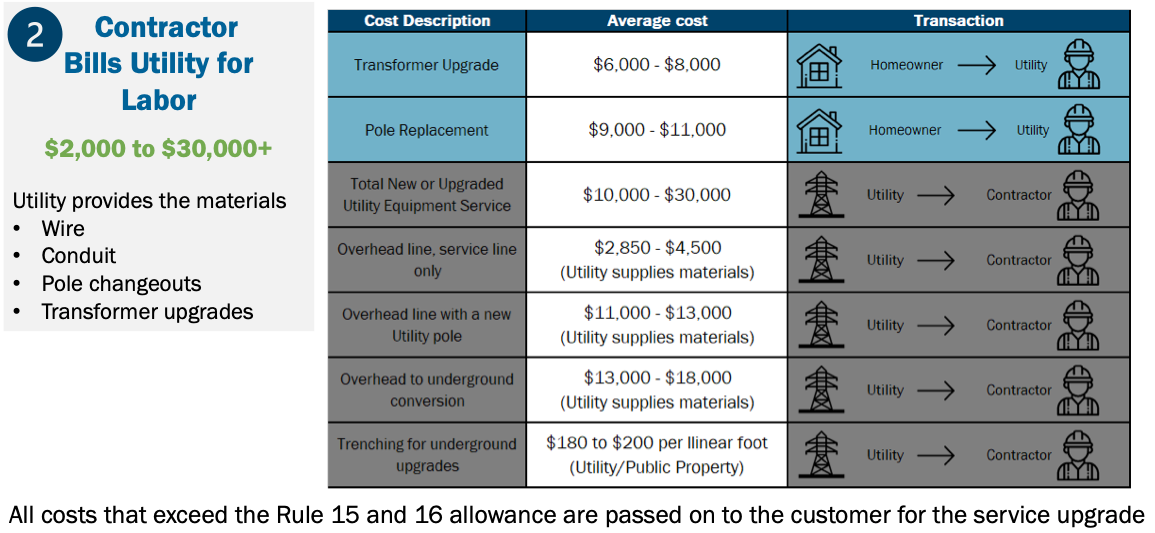
Sometimes (as in my case) you’ll get directly hit by utility costs... shown above in item 2, and even if you don’t, these upgrade costs born by the utility are passed along to everyone in the form of increased electricity rates.
Yet, as I had discovered, even if you’re stuck with a 100 amp main, in most cases, you don’t actually need to upgrade your utility electric service, because it’s very unlikely you’ll actually use all of your electrical appliances at once -
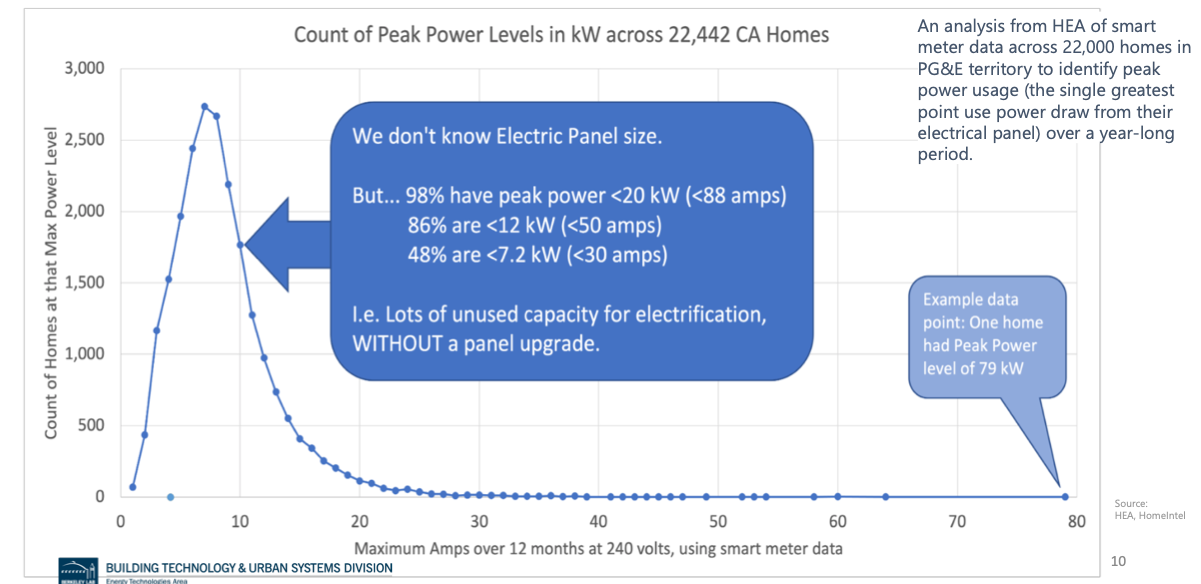
In fact, to prove it's possible to fully electrify a 100-amp house in the real world, a professor at Purdue's Center for High Performance Buildings set out with his grad students to test this out in the midwest - in the middle of winter - with a 2200 square foot, fully-electrified home with an EV. They showed you could in fact fully run the house by carefully controlling only the home thermostat and water heater run times (graph of usage and full paper)!
For my house, I needed a commercial approach, that would pass inspection for a traditional city code inspector. My discovery journey led me to three options -
First option: Create a “Watt Diet”
This is a concept outlined by Redwood Energy, that involves carefully outlining and planning your appliances and the circuits in your electric panel that connect them. Their website has an online calculator to help you create your own Watt Diet.
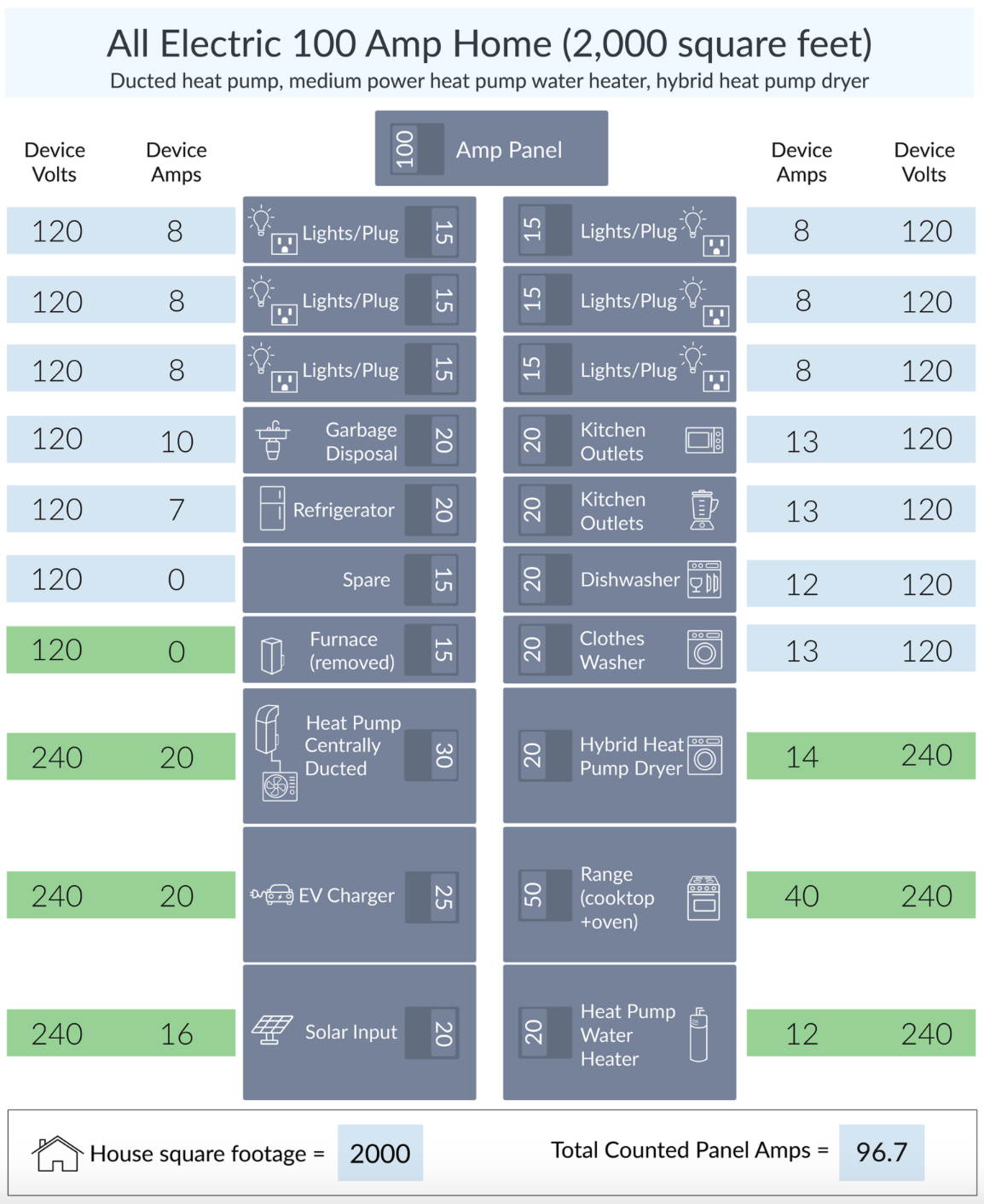
Second Option: Use an “Energy Management System” (EMS)
An Energy Management System consists of a smart controller that can continuously monitor and control all the electrical circuits in your home. By doing so, the system can automatically shut down circuits to avoid an electrical service overload. And importantly, an EMS is a system recognized by the National Electric Code for serving exactly this purpose. The particular EMS I decided to purchase is the Span panel, which they market as a “smart electrical panel”. They talk specifically about how it can be used for energy management here.
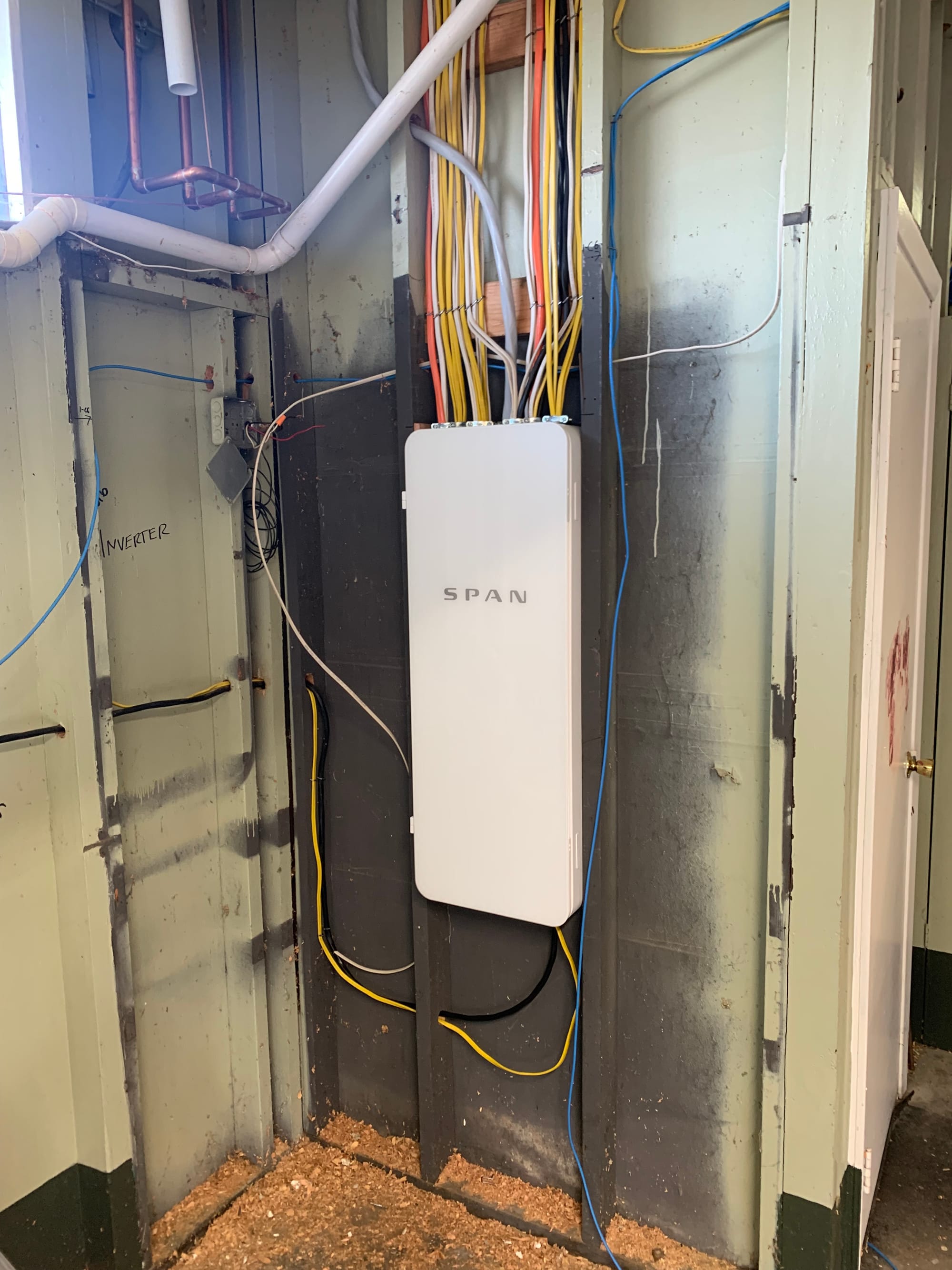
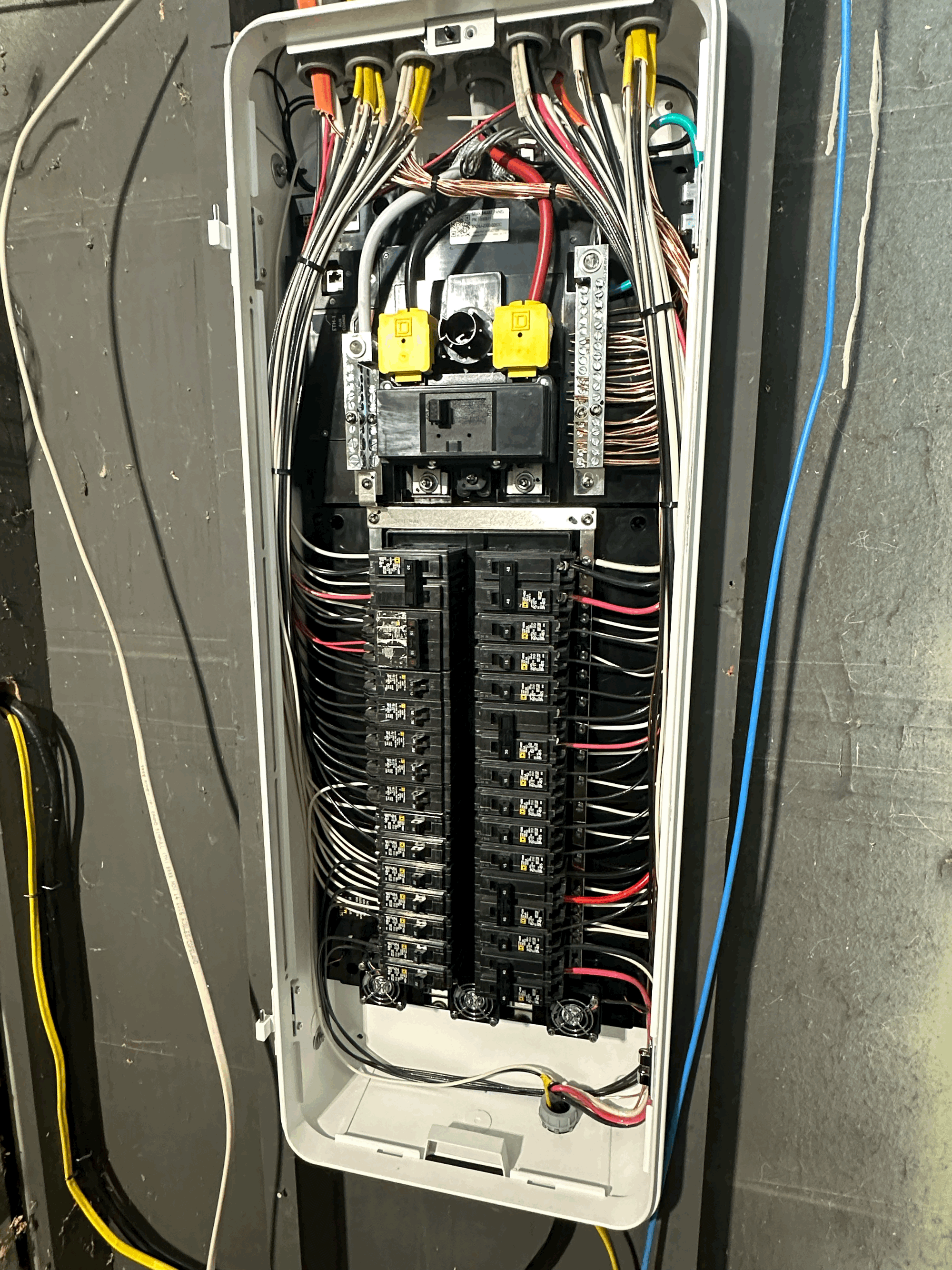
My Span panel EMS - roughed-in to circuits in my garage
Third Option: New Products coming to market
There are many new products coming to market that are not only really nice, high-quality products but that also address some of the issues with electrical service upgrades - such as Copper and Impulse electric stoves with built-in batteries, and low-power plug-in water heaters that can use existing 120-volt outlets.
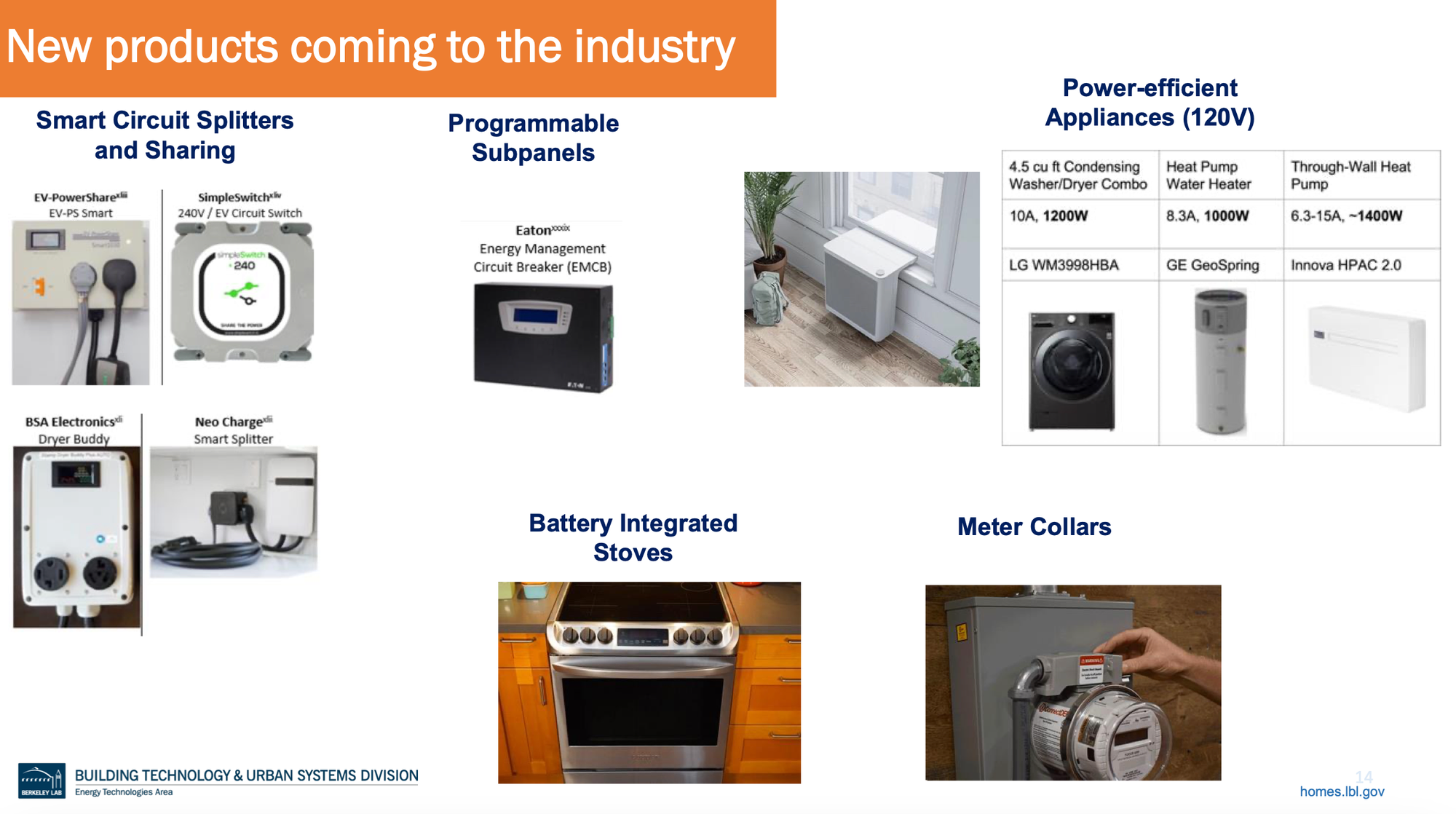
A great deep-dive discussing the above three options and many more was created by Lawrence Berkeley Labs, here.
Why did I choose to use the Span panel?
I chose Option Two, and got a Span panel. Why I went this route is outlined below:
- It solved the service-upgrade problem I had, at dramatically lower cost. While the Span panel is not an inexpensive product, it was much less expensive and avoided the substantial delay and disruption that an underground service upgrade would have caused. These cost savings alone would have justified it.
- It integrates with solar and battery systems. In addition to providing load management, the Span also provides whole-home management of circuits in a power outage, for example shutting down EV, AC and Hot Water heater while keeping lights and the refrigerator running from battery in an outage.
- I was able to find a provider that could install a complete solar + battery + Span system as a turn-key approach. Cinnamon Energy Systems was my local installer. I’ll talk about my solar installation experience later.
Challenges with the Span panel
As a relatively early adopter of this type of setup, there were some challenges, including:
- Permit coordination - for my renovation, there were two permits pulled - one for the house renovation that included electrical, and another for the solar and Span system. Ultimately this was a simple matter, but I did have to talk to the city permit desk to confirm that as long as the renovation permit referred to the forthcoming solar/battery permit we were good.
- Installation coordination - for my renovation we were replacing the entire electrical system in the house (it was knob-and-tube wiring with 65-year-old electrical panel) managed by a primary electrician working for our general contractor, separate from the solar contractor installing the Span panel. We ran into knowledge gaps between the two electricians, that resulted in a verbal fight in the garage one day that required me to intervene, and a bunch of re-work that required re-wiring the circuit breakers in the Span unit so that they would meet current code (Arc Fault and Ground Fault breakers). In reality, it would have been better if the primary electrician had installed the breakers and done the wiring into the panel directly, but then it would have been a slightly trickier set of contracts, as the Span installation was written as part of the Solar contract so that it could be eligible for the solar system 30% tax credit. While Span claims it’s easy for any electrician to just drop in any of a number of certified standard breakers, the reality is it got what I feel is unnecessarily complicated between the two installers, as Span requires certified contractors to “commission” the unit, and my primary electrician was not.
- Networking and integration with SolarEdge system - the Span panel and SolarEdge system communicate with each other over an Ethernet cable, and then the Span connects to the Internet for both units. At first this didn’t work, which required another site visit by the solar tech. Then, the Span mobile ap had a message saying it was “waiting for SolarEdge to approve” the connection, which would take a few days. When nothing happened after a few days, I had to reach out to Span support to followup with SolarEdge, and after another day finally the systems were communicating. But, the PowerUp function was not enabled in Span - which again required me to reach out to a tech, this time the solar installer, to get the Span EMS system turned on.
Avoiding Service Upgrade: Results
After living with the system for 8 months, the Span EMS system has never kicked in - meaning, we never would have exceeded the capacity of the existing 100-amp service anyway. Shows just how conservative the National Electric Code really is. We have the following major electrical appliances:
- An EV charger, 32-amp but I usually run it at 20 to take advantage of solar
- Two electric ovens, one is 5.4kW and the other is 3kW
- Regular electric dryer, 5kW
- Central Air Conditioning, ~4kW
- Heat Pump Water Heater, ~1.2kW (no backup resistance heat)
We didn’t electrify our stovetop with an induction unit, because it seemed like that might push things (or primary electrician was very skeptical, but we pre-wired for it anyway), and none of the fancy battery units were yet available, as we’d ordered our appliances a long time ago due to the post Covid delays.
Looking at the electric usage data, it looks like our highest 15 minutes of electricity usage was 14.4kW, or about 60 amps. So, still room for even more electric stuff in the future!
